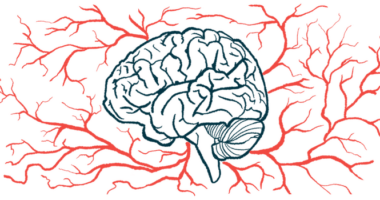Taking part in certain recreational activities may increase risk of ALS
Gardening, golfing, hunting may affect ALS risk, especially for men: Study

Taking part in certain recreational activities, including gardening, golfing, woodworking, and hunting, may increase the risk of developing amyotrophic lateral sclerosis (ALS), especially for men, according to a new study.
While the causes of ALS still are not well understood, several risk factors have been identified. There’s evidence that jobs in some specific professions — such as military service, as an electrician, and regularly working with toxic chemicals and pesticides — are associated with an increased risk of ALS.
However, this study shows that the recreational activities a person chooses to participate in may also affect ALS risk.
“We know that occupational risk factors, like working in manufacturing and trade industries, are linked to an increased risk for ALS, and this adds to a growing literature that recreational activities may also represent important and possibly modifiable risk factors for this disease,” Stephen Goutman, MD, director of the Pranger ALS Clinic at the University of Michigan and the study’s first author, said in a university press release.
The study, “Avocational exposure associations with ALS risk, survival, and phenotype: A Michigan-based case-control study,” was published in the Journal of Neurological Sciences.
Recreational activities tied to increased risk of ALS for men, but not women
To know more about how recreational activities impact ALS onset, the researchers surveyed 400 people with the neurodegenerative disease, asking about their histories of participation in a wide range of activities.
The scientists also surveyed 287 people without ALS to act as controls. In general, the ALS patients tended to be somewhat older and had less formal education, but otherwise, the two groups were similar in terms of demographics.
Using the survey results, the scientists constructed statistical models to look for activities that, after adjusting for other factors, were significantly more common among ALS patients.
“We leveraged our detailed exposure questionnaire to determine whether particular hobbies or exercise activities associate with ALS risk,” the team wrote.
The results identified more than half a dozen recreational activities with a statistically significant link to ALS. Among them were golfing, dancing, gardening or yard work, woodworking, and hunting or shooting.
The researchers then repeated the analysis by sex.
In male patients, many of these activities — and specifically golf, gardening, woodworking, and hunting — were significantly linked with ALS. Swimming and metal work also became significantly associated with ALS in male patients.
But among female patients, no recreational activities were significantly associated with ALS. This suggests “that the factors influencing ALS may differ between males and females,” the researchers wrote.
“It is surprising that the risk factors we identified appear to be specific to males,” said Goutman, also the associate director of the ALS Center of Excellence at the University of Michigan.
Goal is to develop list of factors that could be used to decrease risk
The statistical models did not show any associations between recreational activities and survival in ALS patients. However, individuals who had participated in swimming or weightlifting tended to be younger when they first developed disease symptoms, the researchers noted.
The scientists said that further research will be needed to verify these results and to understand exactly why these associations exist. But the bigger takeaway here, according to the team, is that recreational activities may affect ALS risk, so these activities should be considered in addition to occupation when studying ALS risk factors.
“Future studies should include these activities to pinpoint how they can be understood in the context of ALS prevention, diagnosis and treatment,” Goutman said.
Our goal is to understand what occupations and hobbies increase ALS risk because identifying these activities provides the first step towards ALS prevention.
The team hopes that better understanding the factors that increase the risk of ALS will pave the way for new strategies to prevent the disease.
Eva Feldman, MD, PhD, a professor at the University of Michigan and the study’s senior author, said the ultimate goal is to determine any particular activities that may warrant extra vigilance.
“Our goal is to understand what occupations and hobbies increase ALS risk because identifying these activities provides the first step towards ALS prevention,” Feldman said.
“For a disease like Alzheimer’s, we know that a list of factors — including smoking, obesity and high lipids — can increase risk by 40%,” Feldman added. “Our goal is to establish a similar list for ALS to create a roadmap to decrease risk. With apologies to Robert Frost, it is currently the ‘road not taken’, and we want to change that.”








